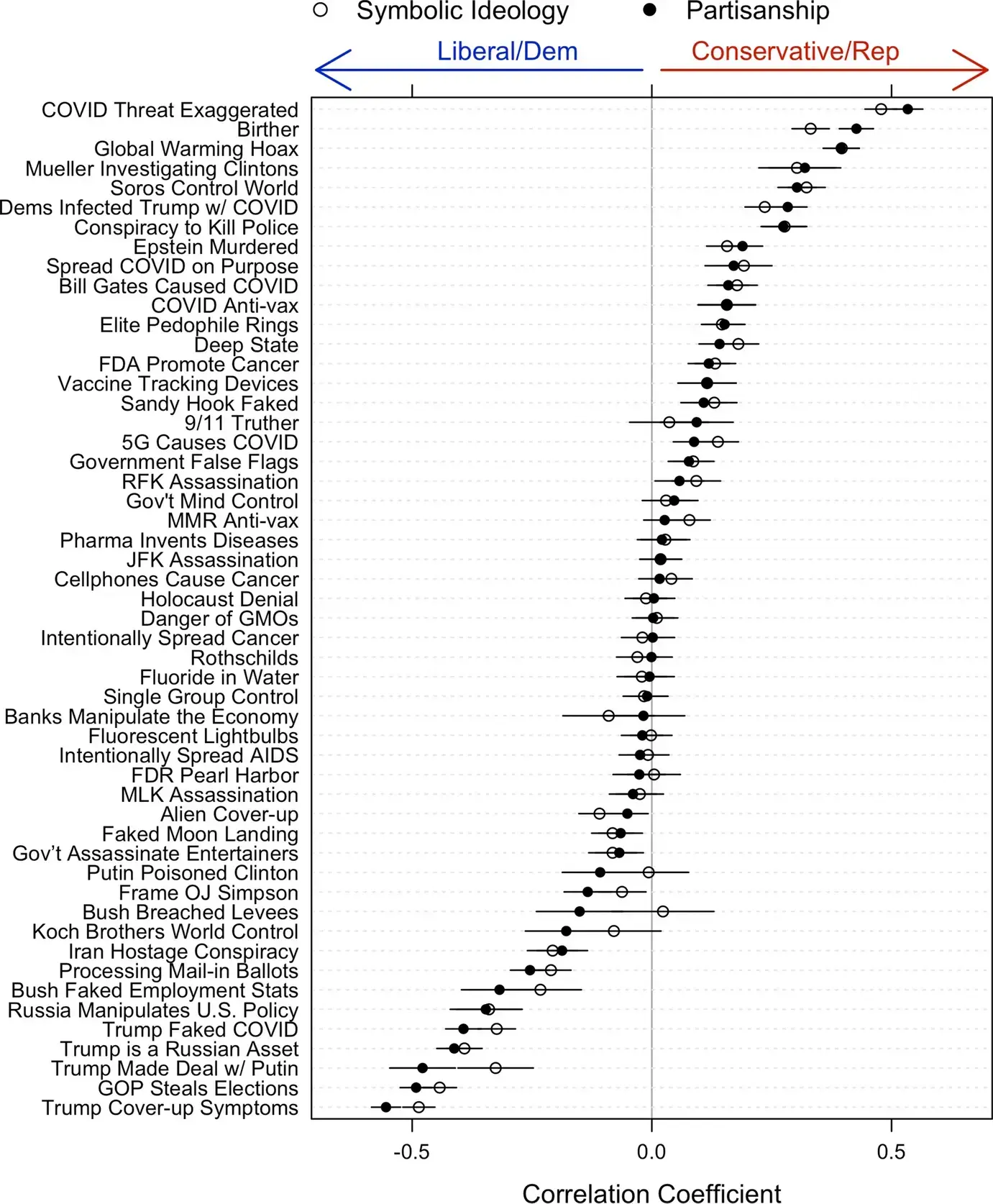There's a pretty massive difference between Russian election interference, which has quite a bit of evidence behind it, and COVID 5G, which makes zero sense at all.
Data Is Beautiful
A place to share and discuss data visualizations. #dataviz
(under new moderation as of 2024-01, please let me know if there are any changes you want to see!)
Yeah, I feel like right-wing conspiracy theories are just batshit insane, whereas at least a few of the left-wing ones are somewhat plausible, though there’s a few that have me scratching my head. Epstein getting murdered is more right-wing? I’m assuming because of the belief that he had dirt on Clinton, though it seems equally likely he had something on Trump and Trump was even president at the time. Conspiracy theory is an interesting look at some of the biases behind each side of the political spectrum.
This list is silly. 4 of the bottom 6 aren't even a "theory". They're straight up documented conspiracies. The GOP brags about REDMAP, voter registration purges, and gerrymandering. Trump has had known Russian Mafia connections since the 80's. And he and much of the GOP openly align with Russian interests. Anyone who equates those actions as being equivalent to Birtherism is being intentionally dishonest.
trump faked covid??? like covid isn't real
Ummm “banks manipulate the economy”? That’s not a conspiracy, that’s just modern economics lol
“Epstein murdered” Um ackshually the correct term is suicided
Where is this data coming from? What was the sample size and how was the sample selected
